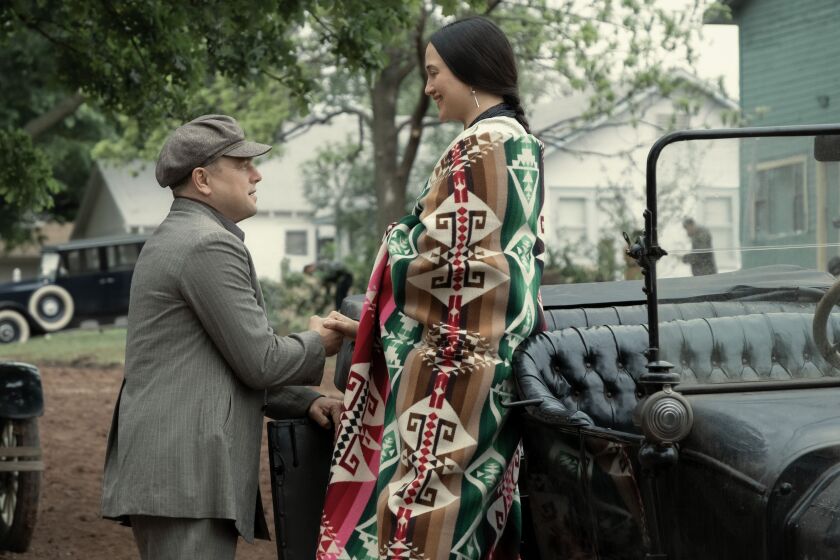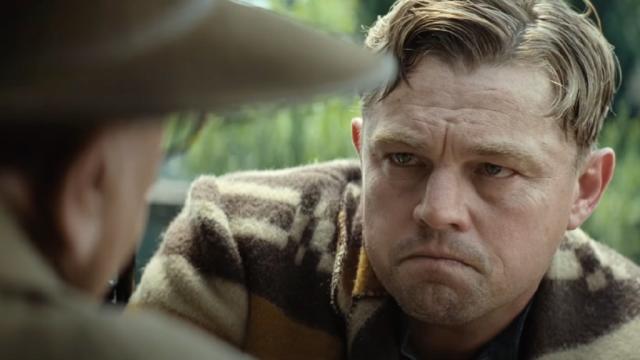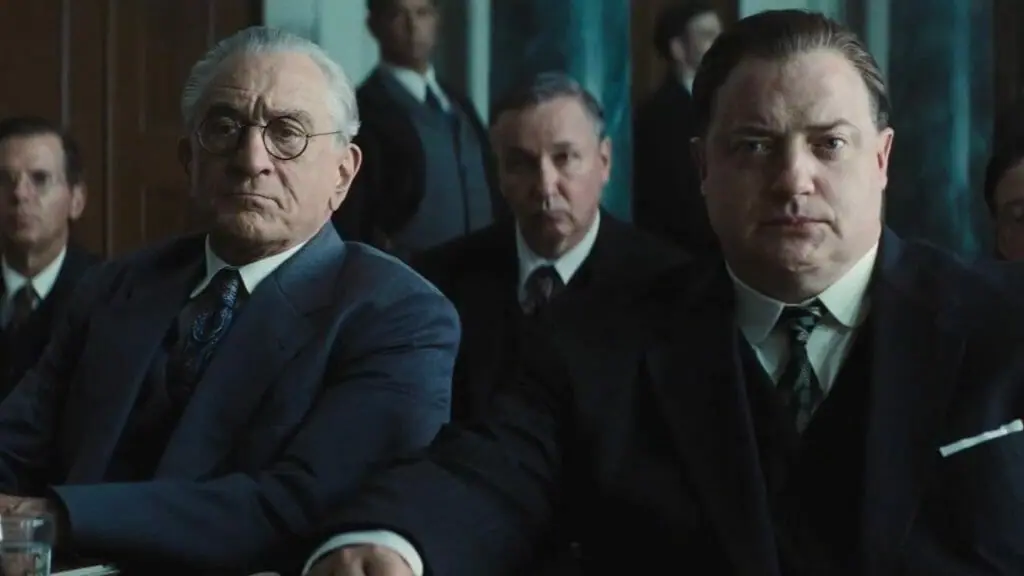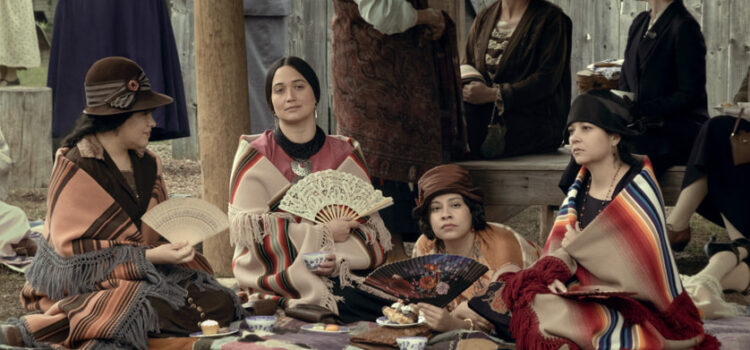By Alex McPherson
A disturbing story of greed, prejudice, and the American Dream soaked in venom, director Martin Scorsese’s “Killers of the Flower Moon” raises awareness of heinous crimes committed against the Osage People, and contains outstanding craftsmanship, but remains limited in perspective. Scorsese’s film is a reminder of the hardships and resilience of the Osage framed largely through the eyes of White evildoers, to emotionally compromised effect.
Based on David Grann’s bestselling nonfiction book of the same name, “Killers of the Flower Moon” centers around the “Reign of Terror” that befell members of the Osage Nation in the early 1920s. After being forced to relocate to supposedly desolate land in Oklahoma, members of the Osage Nation discovered that their new surroundings contained oil — rendering them the richest people per capita on Earth, but also targets for manipulation by those eager to strip them of all rights and privileges.
Such is the case of William “King” Hale (Robert De Niro), a wealthy cattle rancher and businessman, who feigns love for the Osage but seeks to take control of their oil-rich lands via any means necessary, including murdering them for oil rights.
Hale’s nephew, the infuriating and slow-witted Ernest Burkhart (Leonardo DiCaprio), returns from working as a cook in World War I, looking to Hale for a job, unabashedly admitting his love for women and money. Ernest, having injuries that prevent him from doing much manual labor, starts working as a cab driver, where he meets Mollie Kyle (an incredible Lily Gladstone) — a beautiful, sharply intelligent woman quietly enraged at the ways she’s treated by White-dominated authority — and becomes smitten with her.

Hale encourages Ernest to seduce and marry Mollie, who also happens to be an heir to a large fortune in oil royalties held by her mother, Lizzie Q (Tantoo Cardinal) — so long as Mollie’s sisters and their husbands aren’t around to inherit it first. Thus sets the stage for brazen brutality, as Hale and Ernest’s schemes grow ever more elaborate, and Ernest becomes a part of Mollie’s family — developing genuine love for her while simultaneously killing her family behind her back: infuriatingly ignorant and/or unwilling to reckon with his own bloodthirstiness and lack of humanity. Eventually, a J. Edgar Hoover-ordered FBI investigation gets underway, led by agent Tom White (Jesse Plemmons), but the grisly damage has already been done.
Indeed, “Killers of the Flower Moon” tells a sobering, insidious story that needs to be told, taking plenty of time to set the scene, emphasize the devilish machinations of its villains, and educate viewers on the hardships and resilience of the Osage Nation. What’s sacrificed by Scorsese and co-writer Eric Roth’s screenplay, however, is a more intentional, meaningful focus.
The film spotlights Ernest’s crisis of conscience (or lack thereof) above diving into the individual tragedies committed against the Osage — illuminating themes that, regardless of relevance, have persisted throughout American history. Scorsese misses an opportunity to explore new, informative points-of-view that have previously been sidelined in mainstream storytelling of this scale.
Stylistically, “Killers of the Flower Moon” excels, but viewers shouldn’t expect anything less from Scorsese. On a big screen, the film is unquestionably immersive, with cinematographer Rodrigo Prieto capturing expansive plains and claustrophobic interiors, blinding sun and menacing, pitch-black darkness, in beautiful compositions that rarely draw too much attention to themselves.
Longtime Scorsese editor Thelma Schoonmaker lets scenes breathe and marinate — giving the incredible ensemble, including numerous Indigenous actors, room to stretch their wings, with Scorsese taking a noticeably sparse directorial style that eschews flashiness for intimate contemplation: sometimes taking a more spiritual, matter-of-fact approach in depicting Osage customs.
Acts of violence against the Osage are depicted with cold remove — coming seemingly out of nowhere, shocking in their immediacy and grotesque without being gratuitous. The late Robbie Robertson’s score is particularly effective as an omnipresent heartbeat to the monstrous acts unfolding before our eyes.

DiCaprio delivers a characteristically engaging performance as Ernest, with a rough-hewn look, disastrous dentistry, and playful swagger that belies a dark heart of greed and moral bankruptcy.
Viewers going into “Killers of the Flower Moon” with expectations for Ernest to be “redeemed” won’t find that arc here, as his love for Mollie is always offset by the cruelty he exhibits behind her back: a buffoon resistant to the shred of goodness located somewhere deep within his corrupted heart.
As our primary vessel for this story, he’s frustrating, if not outright idiotic, being manipulated by Hale and giving into base instincts that cannot coexist alongside his life with Mollie, try though he might.
DeNiro is frighteningly unhinged as Hale, swerving between Hale’s public and private personas with precision. Hale enlists henchmen to do his dirty work for him, but he remains a powerful presence, and Scorsese’s film gives us plenty of time to observe him pulling strings and explaining his schemes, hiding his conspiracies behind seemingly benign smiles and a culture of complicity.
Gladstone is, without a doubt, the film’s MVP, conveying warmth, quiet rage, crushing sadness, and persistent hope with minimal dialogue. Through it all, Mollie’s bravery shines through — her resistance to accepting Ernest’s betrayal is heartbreaking to watch.
It’s too bad that “Killers of the Flower Moon” fades her into the background after a certain point, though, as well as giving her siblings and other members of the Osage Nation — featuring powerful performances from Cara Jade Myers, Janae Collins, Jillian Dion, and William Belleau, among others — only a handful of sequences (in the span of a mammoth 206-minute runtime) to divert the spotlight from White evildoers.
That extended runtime exacerbates this issue, especially in the third act, full of legal histrionics and prolonged sequences where viewers watch Ernest and co. squirm under interrogation by the FBI; their incompetence and stupidity on full display, even as the “justice system” fails to live up to its name.
A last-minute framing device at the conclusion paints the proceedings in a somewhat new light (commenting on the twisted appeal of true-crime stories to begin with and bringing attention to the limitations of Scorsese’s directorial viewpoint, ending with a notable shift back to the Osage in its closing moments), but perhaps “Killers of the Flower Moon” could have been better told by a filmmaker more willing to buck tradition.
It’s admirable that Scorsese takes on the challenge here, and will undoubtedly raise awareness to these real-life happenings, but “Killers of the Flower Moon” is also ham-strung by his own storytelling patterns. It’s an important film brimming with technical mastery and exceptional performances, but one that’s not nearly as enlightening or emotionally gripping as it believes it is.

“Killers of the Flower Moon” is a 2023 historical western true crime drama directed by Martin Scorsese and starring Leonardo DiCaprio, Robert DeNiro, Lily Gladstone, Jesse Plemons. Cara Jade Myers, Brendan Fraser, John Lithgow, Tommy Schultz
Rated: R for violence, some grisly images, and language, the run time is 3 hours, 26 minutes. It opens in theatres Oct. 20 and will stream on Apple TV+ at a later date, to be announced. Alex’s Grade: B
Alex McPherson is an unabashed pop culture nerd and a member of the St. Louis Film Critics Association.

